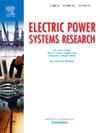二硫化二苯酯对矿物油浸渍纤维素压制板局部放电特性的影响
IF 4.2
3区 工程技术
Q2 ENGINEERING, ELECTRICAL & ELECTRONIC
引用次数: 0
摘要
研究了矿物油浸渍纤维素纸板在二硫化二苯酯(DBDS)作用下的局部放电特性。DBDS浓度为0 ppm、1,000 ppm、5,000 ppm和10,000 ppm的矿物油在150℃下热老化5天。PD测量包括视电荷、PD重复率和局部放电起始电压(PDIV),在10 mm和20 mm的间隙距离上使用针平面和平面电极配置进行。分析了相位分解局部放电(PRPD)模式,以评估放电强度和相位分布。结果表明,在针状平面结构下,当DBDS为5000 ppm时,在两种间隙距离下,压板的PDIV都增加了44.3%。相比之下,在两种间隙距离下,在1,000 ppm DBDS中老化的压板板的PDIV都降低了56%。PRPD分析揭示了从紧凑的、以峰为中心的排放(类型3)到广泛的、分散的模式(类型6)的转变,表明DBDS污染驱动的表面逐步退化。本文章由计算机程序翻译,如有差异,请以英文原文为准。
Effect of dibenzyl disulphide on partial discharge characteristics in mineral oil–impregnated cellulose pressboard
This study investigates the partial discharge (PD) characteristics of mineral oil-impregnated cellulose pressboard induced by dibenzyl disulphide (DBDS). Mineral oils with DBDS concentrations of 0 ppm, 1,000 ppm, 5,000 ppm, and 10,000 ppm were thermally aged at 150 °C for 5 days. PD measurements, which included apparent charge, PD repetition rate, and partial discharge inception voltage (PDIV), were performed using needle–plane and plane–plane electrode configurations at 10 mm and 20 mm gap distances. Phase–resolved partial discharge (PRPD) patterns were analysed to assess discharge intensity and phase distribution. Results show that under the needle–plane configuration, PDIV increases by up to 44.3% in pressboards aged with 5000 ppm DBDS at both gap distances. In contrast, under the plane–plane configuration, PDIV of pressboards aged in 1,000 ppm DBDS at both gap distances decreases by up to 56%. PRPD analysis reveals a transition from compact, peak-centred discharges (Type 3) to broad and scattered patterns (Type 6) that indicates progressive surface degradation driven by DBDS contamination.
求助全文
通过发布文献求助,成功后即可免费获取论文全文。
去求助
来源期刊

Electric Power Systems Research
工程技术-工程:电子与电气
CiteScore
7.50
自引率
17.90%
发文量
963
审稿时长
3.8 months
期刊介绍:
Electric Power Systems Research is an international medium for the publication of original papers concerned with the generation, transmission, distribution and utilization of electrical energy. The journal aims at presenting important results of work in this field, whether in the form of applied research, development of new procedures or components, orginal application of existing knowledge or new designapproaches. The scope of Electric Power Systems Research is broad, encompassing all aspects of electric power systems. The following list of topics is not intended to be exhaustive, but rather to indicate topics that fall within the journal purview.
• Generation techniques ranging from advances in conventional electromechanical methods, through nuclear power generation, to renewable energy generation.
• Transmission, spanning the broad area from UHV (ac and dc) to network operation and protection, line routing and design.
• Substation work: equipment design, protection and control systems.
• Distribution techniques, equipment development, and smart grids.
• The utilization area from energy efficiency to distributed load levelling techniques.
• Systems studies including control techniques, planning, optimization methods, stability, security assessment and insulation coordination.
 求助内容:
求助内容: 应助结果提醒方式:
应助结果提醒方式:


